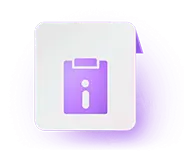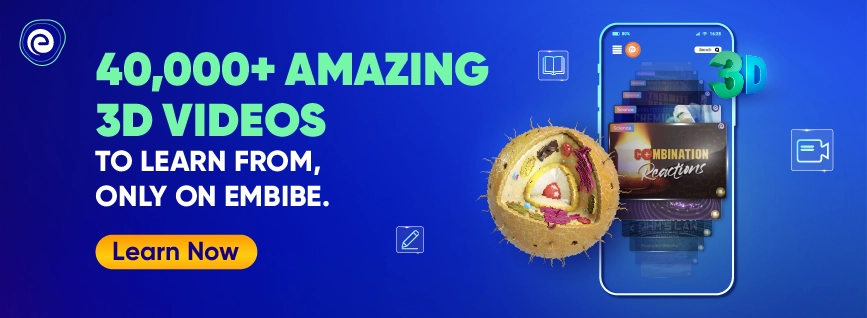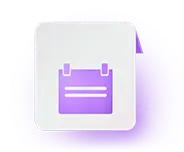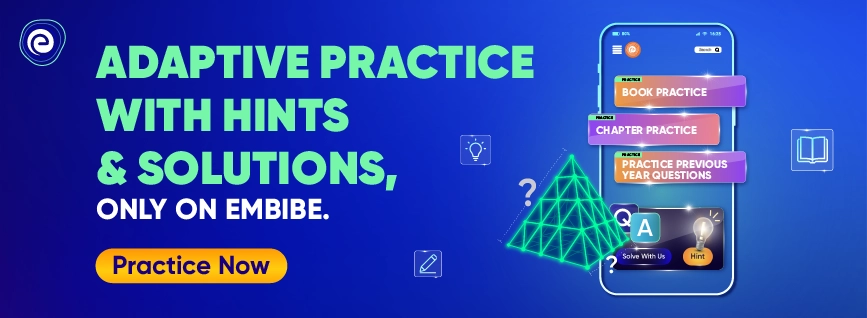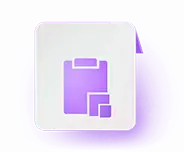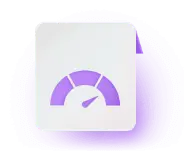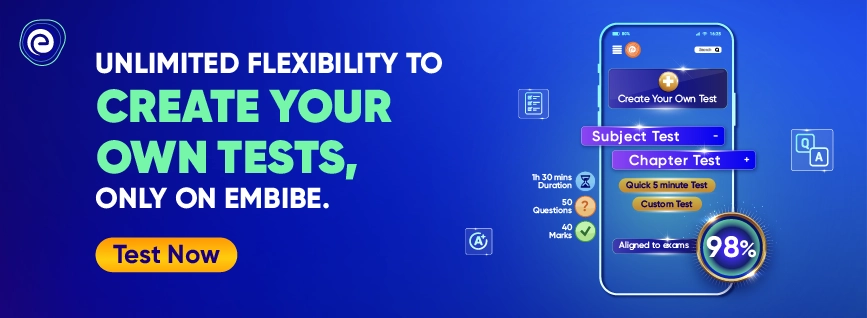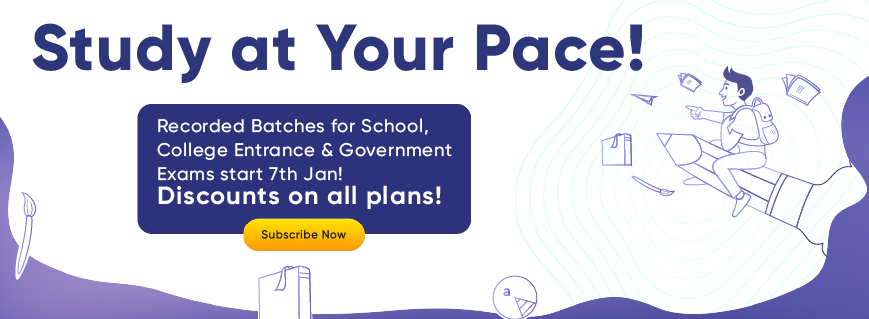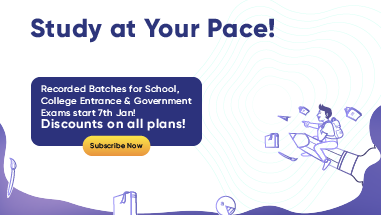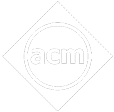- Written by gnanambigai
- Last Modified on 16-02-2023
Ladakh Board Class 6 Exams 2023
Class 6 is an important phase of a student’s academic career. Studying the Class 6 concepts efficiently increases the scope of the students to achieve good grades in higher levels of education. Ladakh has three levels of education: primary, secondary, and tertiary. The union territory lacks an autonomous head which is why the Ladakh Board Class 6 exams will be administered by the Central Board of Secondary Education (CBSE).
For the students to perform exceptionally well in the Ladakh Board Class 6 exams, students must be well aware of the Class 6 syllabus, exam pattern, blueprint, preparation tips and a comprehensive study plan. They must proficiently study and revise the textbooks prescribed by the board to not miss out on answering any question asked in the exam. Keep reading to know more about the Ladakh Board Class 6 exams.
Ladakh Board Class 6 Exam Summary 2023
The Central Board of Secondary Education (CBSE) designed the CCE (Continuous and Comprehensive Evaluation) design for secondary classes in 2009-2010. There are two types of tests in the CCE pattern: formative and summative. Formative tests include a student’s in-class performance, classwork, homework, project submission, and active participation in various class events.
In the summative pattern, three-hour written tests are used to assess the student’s intellectual understanding. Formative Assessment (which was completed four times during an academic session) accounted for 40% of the total.
The Summative Assessment (a three-hour written test given twice; SA-1 was given after FA-1 and FA-2, and SA-2 was given after FA-3 and FA-4) accounted for 60% of the total. Before knowing more details on Ladakh Board Class 6 exams, students can have a look at the overview table below.
| Particulars |
Details |
| Name of the Board |
Ladak Board |
| Affilated to |
CBSE |
| Year of Functioning |
1989 |
| Headquarters |
Delhi, India |
| Exam Name |
Ladakh Board Class 6 Exams |
| Academic Session |
2022-23 |
| Mode of Exam |
Offline |
| Type of Exam |
CCE (Continuous and Comprehensive Evaluation) |
Ladakh Board Official Website Link
http://dse.ladakh.gov.in/
Ladakh Board Class 6 Exam Syllabus 2023
The syllabus prescribed for the Class 6 students of Ladakh Board aims at expanding the knowledge and enhancing the skills of the student. The syllabus covers the most important topics of Science, Social Science, and Mathematics subjects in an engaging way that captures the interest of the students.
It is important that the students go through the syllabus and prepare a timetable that equally prioritises all the subjects. The following sections show the complete Ladakh Class 6 syllabus for various subjects.
Ladakh Board Class 6 Science Syllabus
The Science subject is further subdivided into three sections: Physics, Chemistry, and Biology. All the chapters are structured to help students enhance their subject knowledge and explore the new concepts of Science. Below, we have mentioned the Ladakh board Class 6 Science syllabus in detail.
| Chapter Number |
Chapter Name |
Section |
| Chapter-1 |
Food: Where Does it Come From? |
Biology |
| Chapter-2 |
Components of Food |
| Chapter-3 |
Fibre to Fabric |
Chemistry |
| Chapter-4 |
Sorting Materials into Groups |
| Chapter-5 |
Separation of Substances |
| Chapter-6 |
Changes Around Us |
| Chapter-7 |
Getting to Know Plants |
Biology |
| Chapter-8 |
Body Movements |
| Chapter-9 |
The Living Organisms and their Surroundings |
| Chapter-10 |
Motion and Measurement of Distances |
Physics |
| Chapter-11 |
Light, Shadows and Reflections |
| Chapter-12 |
Electricity and Circuits |
| Chapter-13 |
Fun With Magnets |
| Chapter-14 |
Water |
Chemistry |
| Chapter-15 |
Air Around Us |
| Chapter-16 |
Garbage In, Garbage Out |
Biology |
Ladakh Board Class 6 Social Science Syllabus
Social Science is further subdivided into History, Geography, and Political Science. Students must ensure that all the topics of History, Geography and Political Science are equally prioritised to complete the syllabus on time. Students can refer to the complete Social Science syllabus as mentioned below.
| Social Science |
Chapter Number |
Chapter Name |
| History |
Chapter-1 |
What, Where, How, and When? |
| Chapter-2 |
On the trail of the earliest people |
| Chapter-3 |
From gathering to growing food |
| Chapter-4 |
In the earliest cities |
| Chapter-5 |
What books and burials tell us? |
| Chapter-6 |
Kingdoms, Kings, and an early republic |
| Chapter-7 |
New questions and ideas |
| Chapter-8 |
Ashoka the emperor |
| Chapter-9 |
Vital Villages, thriving towns |
| Chapter-10 |
Traders, Kings, and Pilgrims |
| Chapter-11 |
New Empires and Kingdoms |
| Chapter-12 |
Buildings, Paintings, and Books |
| Geography |
Chapter-1 |
The Earth in the Solar System |
| Chapter-2 |
Globe: Latitudes and Longitudes |
| Chapter-3 |
Motions of the Earth |
| Chapter-4 |
Maps |
| Chapter-5 |
Major Domains of the Earth |
| Chapter-6 |
Major Landforms of the Earth |
| Chapter-7 |
Our Country- India |
| Chapter-8 |
India – Climate, Vegetation, and Wildlife |
| Political Science |
Chapter-1 |
Understanding Diversity |
| Chapter-2 |
Diversity and Discrimination |
| Chapter-3 |
What is Government? |
| Chapter-4 |
Key elements of a Democratic Government |
| Chapter-5 |
Panchayati Raj |
| Chapter-6 |
Rural Administration |
| Chapter-7 |
Urban Administration |
| Chapter-8 |
Rural Livelihood |
| Chapter-9 |
Urban Livelihood |
Ladakh Board Class 6 Mathematics Syllabus
Students must consistently keep practicing all the problems of the Mathematics subject to perform well in the exams. Understanding the step-wise solutions is important to score good marks in Mathematics. Students can note down the Mathematics syllabus from below.
| Chapter Number |
Chapter Name |
| Chapter-1 |
Knowing Our Numbers |
| Chapter-2 |
Whole Numbers |
| Chapter-3 |
Playing With Numbers |
| Chapter-4 |
Basic Geometrical Ideas |
| Chapter-5 |
Understanding Elementary Shapes |
| Chapter-6 |
Integers |
| Chapter-7 |
Fractions |
| Chapter-8 |
Decimals |
| Chapter-9 |
Data Handling |
| Chapter-10 |
Mensuration |
| Chapter-11 |
Algebra |
| Chapter-12 |
Ratio and Proportion |
| Chapter-13 |
Symmetry |
| Chapter-14 |
Practical Geometry |
Ladakh Board Class 6 English Syllabus
For Class 6, the Ladakh English syllabus recommends two textbooks: Honeysuckle and A Pact with the Sun, Supplementary Reader. It focuses on language development and vocabulary expansion through comprehensive reading and writing skills.
| Chapters and Poetry in Textbook Honeysuckle |
| Chapter Number |
Chapter Name |
| Chapter-1 |
Who Did Patrick’s Homework? |
| Chapter-2 |
How the Dog Found Himself a New Master! |
| Chapter-3 |
Taro’s Reward |
| Chapter-4 |
An Indian-American Woman in Space |
| Chapter-5 |
A Different Kind of School |
| Chapter-6 |
Who I Am |
| Chapter-7 |
Fair Play |
| Chapter-8 |
A Game of Chance |
| Chapter-9 |
Desert Animals |
| Chapter-10 |
The Banyan Tree |
| Poetry No. |
Poetry Name |
| Poem-1 |
A House, A Home |
| Poem-2 |
The Kite |
| Poem-3 |
The Quarrel |
| Poem-4 |
Beauty |
| Poem-5 |
Where Do All the Teachers Go |
| Poem-6 |
The Wonderful Words |
| Poem-7 |
Vocation |
| Poem-8 |
What if |
| Poem-9 |
Chapters |
| Chapters in Textbook A Pact with the Sun |
| Chapter Number |
Chapter Name |
| Chapter-1 |
A Tale of Two Birds |
| Chapter-2 |
The Friendly Mongoose |
| Chapter-3 |
The Shepherd’s Treasure |
| Chapter-4 |
The Old-Clock Shop |
| Chapter-5 |
Tansen |
| Chapter-6 |
The Monkey and the Crocodile |
| Chapter-7 |
The Wonder Called Sleep |
| Chapter-8 |
A Pact with the Sun |
| Chapter-9 |
What Happened to the Reptiles |
| Chapter-10 |
A Strange Wrestling Match |
Ladakh Board Class 6 English Grammar Syllabus
Apart from Honeysuckle and A pact with the Sun, grammar is also an important part of the English syllabus. The topics included in the Grammar syllabus are:
- Determiners
- Linking words
- Adverbs (place and type)
- Tense forms
- Clauses
- Passivisation
- Adjectives (Comparative and Superlative)
- Word order in sentence types
- Reported speech
Ladakh Board Class 6 Hindi Syllabus
The syllabus for Ladakh Board Class 6 Hindi comprises Grammar, Composition and Literature (Prose and Poetry). Ladakh Board Class 6 Hindi syllabus has been divided into the following sections:
- Hindi Syllabus For Vasant
- Hindi Syllabus For Durva
- Hindi Syllabus For Bal Ram Katha
- Hindi Grammar Syllabus
Ladakh Board Syllabus For Class 6 Hindi (Vasant Book)
| Chapter Number |
Chapter Name |
| Chapter-1 |
वह चिड़िया जो (कविता) |
| Chapter-2 |
बचपन (संस्मरण) |
| Chapter-3 |
नादान दोस्त (कहानी) |
| Chapter-4 |
चाँद से थोड़ी-सी गप्पे (कविता) |
| Chapter-5 |
अक्षरो का महत्त्व (निबंध) |
| Chapter-6 |
पार नजर के (कहानी) |
| Chapter-7 |
साथी हाथ बढ़ाना – एक दौड़ ऐसी भी (केवल पढ़ने के लिए) |
| Chapter-8 |
एस – एस (एकांकी) |
| Chapter-9 |
टिकेट – एल्बम (कहानी) |
| Chapter-10 |
झांसी की रानी (कविता) |
| Chapter-11 |
जो देखकर भी नहीं देखते (निबंध) – छूना और देखना (केवल पढ़ने के लिए) |
| Chapter-12 |
संसार पुस्तक है (पत्र) |
| Chapter-13 |
मैं सबसे छोटी होऊं (कविता) |
| Chapter-14 |
लोकगीत (निबंध) – दो हरियाणवी लोक गीत (केवल पढ़ने के लिए) |
| Chapter-15 |
नोकर (निबंध) |
| Chapter-16 |
वन के मार्ग में (कविता) |
| Chapter-17 |
साँस – साँस मे बाँस (निबंध) – पेपरमेशी (केवल पढ़ने के लिए) |
Ladakh Board Syllabus For Class 6 Hindi (Durva Book)
| Chapter Number |
Chapter Name |
| Chapter-1 |
कलम |
| Chapter-2 |
किताब |
| Chapter-3 |
घर |
| Chapter-4 |
पतंग |
| Chapter-5 |
भालू |
| Chapter-6 |
झरना |
| Chapter-7 |
धनुष |
| Chapter-8 |
रुमाल |
| Chapter-9 |
कक्षा |
| Chapter-10 |
गुब्बारा |
| Chapter-11 |
पर्वत |
| Chapter-12 |
हमारा घर |
| Chapter-13 |
कपडे की दूकान |
| Chapter-14 |
फूल |
| Chapter-15 |
बातचीत |
| Chapter-16 |
शिलांग से फ़ोन |
| Chapter-17 |
तितली |
| Chapter-18 |
ईश्वरचन्द्र विद्यासागर |
| Chapter-19 |
प्रदर्शनी |
| Chapter-20 |
चिट्ठी |
| Chapter-21 |
अंगुलिमाल |
| Chapter-22 |
यात्रा की तैयारी |
| Chapter-23 |
हाथी |
| Chapter-24 |
डॉक्टर के पास |
| Chapter-25 |
जयपुर से पत्र |
| Chapter-26 |
बढे चलो |
| Chapter-27 |
व्यर्थ की शंका |
| Chapter-28 |
गधा और सियार |
Ladakh Board Syllabus For Class 6 Hindi (Bal Ram Katha Book)
| Chapter Number |
Chapter Name |
| Chapter-1 |
आवध्पुरि मे राम |
| Chapter-2 |
जंगल और जनकपुर |
| Chapter-3 |
दो वर्दान |
| Chapter-4 |
राम का वन-गमन |
| Chapter-5 |
चित्रकूट में भरत |
| Chapter-6 |
दंडक वन में दस वर्ष |
| Chapter-7 |
सोन॓ का हिरण |
| Chapter-8 |
सीता की खोज |
| Chapter-9 |
राम और सुग्रीव |
| Chapter-10 |
लंका में हनुमान |
| Chapter-11 |
लंका विजय |
| Chapter-12 |
राम का राज्याभिशेक |
Ladakh Board Class 6 Study Plan to Maximise Score
To excel in the Ladakh baord Class 6 exams, students must have a well-organised study plan. We at Embibe are here to help the students with some excellent preparation tips and a detailed study plan. This makes the study time of the students much easier and more productive so that students can give equal importance to all the subjects and improve their overall exam performance.
Preparation Tips for Ladakh Board Class 6 Exams
While preparing for the Ladakh Board Class 6 exams, students must keep in mind some important preparation tips that will motivate them to plan their exam preparation much more effectively. Below, we have mentioned some of the essential tips.
- Know Your Syllabus: Students must go through the detailed syllabus for the 6th-grade exam. They must have a general idea of the important questions that frequently appear in the exam. Knowing the blueprint for each subject is important to analyse the marks distribution for each chapter.
- Devise a Well-Planned Schedule: A schedule organises the study time of any student and keeps him encouraged to complete studying the planned topics for the day. Make a well-planned study schedule and stick to it. Prepare an exam revision schedule at least 10 days before the exam.
- Follow Effective Methods of learning: Effective methods of learning include creating subject-wise notes, including a list of important dates, scientist names, equations, and maps. Notes preparation helps in easy and effective revision during the final exams.
- Inculcate Positivity: To give the best performance in the exams, students must maintain a positive attitude towards all the subjects. Identifying the strengths and weaknesses in each subject is important to work on the areas of improvement.
- Follow the Embibe App: Students can follow the Embibe App for the best study material, notes, chapter-wise explanations, assistance and guidance. For the Class 6 syllabus, we have created several study tools and practise sessions.
Ladakh Board Class 6 Detailed Study Plan
A detailed study plan provides clear learning objectives and the amount of time they will spend studying. It is preferable to set aside time each day for studying. Students may spend four to five hours per day studying the planned subject. Here is a subject-by-subject study strategy for getting good grades and learning effectively.
Study Plan for Mathematics:
The strategies listed below will help you improve your understanding of Mathematics.
- It is important to understand the basics/fundamentals before practicing the problems.
- Students must practice the solved problems and exercise questions on a regular basis.
- To make the problem-solving interesting, students must solve the easy problems first, followed by the difficult ones.
- Students must be cautious while performing addition, multiplication, subtraction, and number division to avoid errors.
- Preparing the list of important equations in a book will help in a quick review before the final exam.
- Follow short methods of calculation to save time during the exam.
- Students must be well aware of the blueprint and the question pattern inside and out.
- Solve previous years’ question papers and sample papers.
- Take frequent mock tests and work on the areas of improvement.
Study Plan for Science:
Studying the topics of the Science subject can be made easy with regular practice of the diagrams, equations, reactions, formulas, laws, numericals, and experiments. Here are some pointers to help you improve the grades in the Science exam.
- Prepare a timetable that aids in completing all the chapters before the final exam. The timetable should also allocate time for revision.
- To make the answer sheet presentable to the examiner, practise drawing neat labelled diagrams.
- Study all the important terminologies and become efficient in their usage while writing the answers.
- Understand both the blueprint and the question pattern to analyse the chapters carrying higher marks distribution.
- Students must solve at least the last five years’ exam papers on their own.
- Mock tests should be taken frequently to know the areas of strengths and weaknesses.
Study Plan for Social Science:
Social Science is a high-scoring subject, provided you follow some important tips, Here are pointers to help you get good grades in Social Science.
- As the syllabus of Social Science is vast, students must prepare a list of important dates, events, people, and so on.
- To gain a good command of the concepts, students must thoroughly read the textbook.
- Learn and practice the maps effectively.
- Solve as many previous years’ question papers and mock tests as possible.
Study Plan for English:
English is one of the interesting language subjects that requires less preparation time than Mathematics and Science. Here are some helpful hints for getting good grades in English.
- Make a habit of reading newspapers, storybooks, novels, science fiction, and other materials that will help in improving vocabulary and grammar.
- Allocate time for the sections that require little preparation, such as unseen passages, note-taking, and so on.
- Grammar is an essential component of language. Make sure you understand the fundamentals of grammar.
- To avoid spelling errors, practice writing the answers as you learn them.
FAQs on Ladakh Board Class 6 Exams 2023
We have provided a few frequently asked questions regarding the Ladakh Board Class 6 below:
Q. Where can I find the syllabus for Ladakh Board Class 6 exams?
Ans: Students can find the entire syllabus for the Ladakh Board Class 6 exams on this page.
Q. Which curriculum is followed by the Ladakh Board Class 6?
Ans: Ladakh Board Class 6 follows the CBSE curriculum.
Q. What is the mode of examination for the Ladakh Board Class 6 exams?
Ans: Ladakh Board Class 6 exams are conducted offline. The exam is pen and paper based.
Q. How will Embibe help in preparation for the Ladakh Board Class 6 exams?
Ans: At Embibe, students will find chapter-wise video explanations, practice questions and also mock tests to learn, practice and test themselves on all the Ladakh Board Class 6 concepts.
Q. Where can I find the best study material to study for Ladakh board Class 6 exams?
Ans: Embibe provides the best, quality-oriented study material to study for Ladakh board Class 6 exams.
List of Educational Institutions for Ladakh Board Class 6 Exams
The following is a list of some of the best CBSE schools in Ladakh:
| Serial Number |
Name of the School |
| 1. |
Army Public School |
| 2. |
Delhi Public School |
| 3. |
Islamia Public School |
| 4. |
J & K Sainik School |
| 5. |
Jawahar Navodaya Vidyalaya |
| 6. |
Jawahar Navodaya Vidyalaya Sankoo |
| 7. |
Kendriya Vidyalaya |
| 8. |
Ladakh Public School |
| 9. |
Ladakh Rigjung Public School |
| 10. |
Lamdon Model School |
| 11. |
Mahabodhi Residential School |
| 12. |
Moravian Mission School |
| 13. |
The Tibetan SOS Children’s Village School |
The entire list along with other details can be accessed via the link given below.
List of Schools in Ladakh
Future Exams After Ladakh Board Class 6 Exams
Aside from this school-level exam, there are numerous National and International competitive exams held each year. These assessments boost confidence and enthusiasm.
Some of the competitive Olympiad exams for which Class 6, as well as Class 7 students, can appear are listed below.
- International Science Olympiad (ISO)
- International Maths Olympiad (IMO)
- English International Olympiad (EIO)
- General Knowledge International Olympiad (GKIO)
- International Computer Olympiad (ICO)
- International Drawing Olympiad (IDO)
- National Essay Olympiad (NESO)
- National Social Studies Olympiad (NSSO)
- National Talent Search Examination (NTSE):









